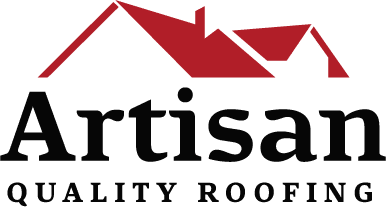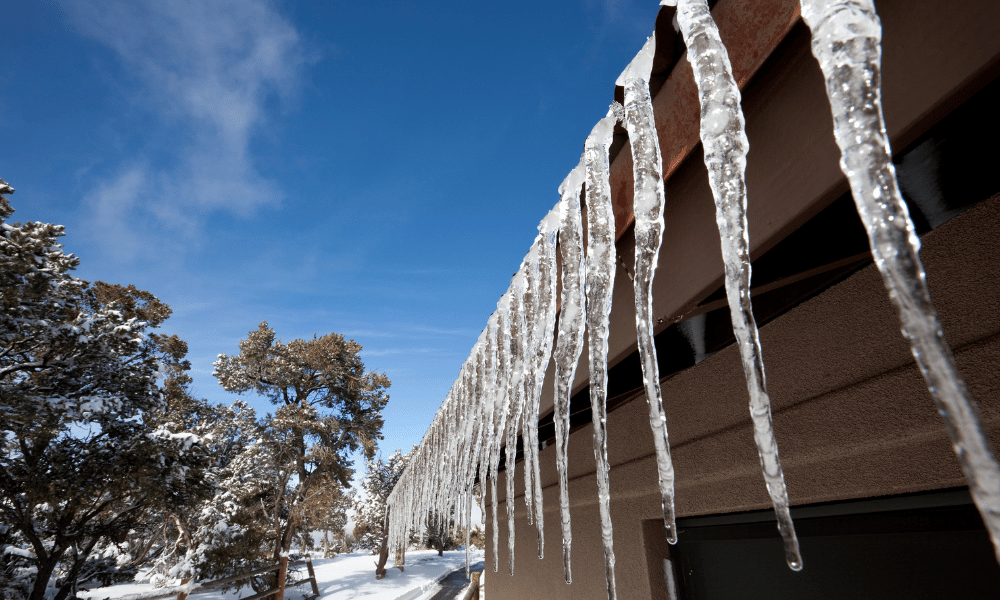
Ice dam prevention: not something you’d think you’d need to worry about living in North Carolina.
Yet despite our mild winters, even the winter weather in North Carolina can cause roof damage.
Last year, we received dozens of calls from new customers with roof leaks after the January 2022 snowstorms. (Well, we called them storms in North Carolina, but New England probably laughed at us).
Almost every homeowner we spoke with had brand new roofs.
Upon inspection, we found that most of these leaks were caused by ice dams.
But what are ice dams, and how could they damage brand new roofs?
In this post, we’ll cover:
Let’s get started!
What causes ice dams?
Attic ventilation & insulation
A Roof ice dam is often the result of poor attic ventilation and insulation.
Why?
Because your attic should ideally be around the same temperature as the roof itself, but this is rarely the case.
For proper ventilation, the soffit vents should allow air to flow into the attic space while the ridge vents or attic fan will then allow air or exhaust to exit.
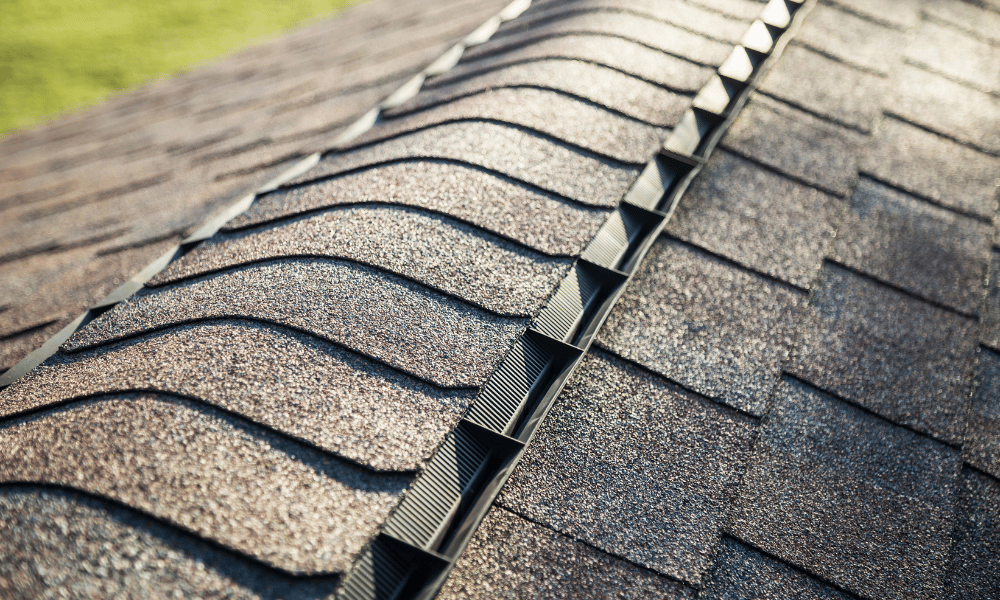
Let’s say, however, that your attic has poor insulation or air leaks.
Come wintertime, your attic space could become slightly or even much warmer than outside.
As a result, the warmer attic temperatures will melt the snow on the roof.
The snow and water will trickle down to the eaves (roof edge) and gutters.
Since the edge of the roof is cooler because it is not exposed to the attic, the water freezes, causing ice damming.
One clear sign of ice dams is icicles.
In summary, if your attic is not properly ventilated, there is an uneven distribution of heat and cold. Snow melts unevenly, hits the cooler roof edge, and freezes.
Melt-freeze cycle
Unfortunately, roof ventilation & attic insulation can’t 100% eliminate ice dams. In some instances, ice can build up on your roof from the day’s natural melt-freeze cycle with daytime and nighttime temperatures.
It’s comparable to finding black ice on the roads early in the morning.
What about plain ole’ snow?
While not as bad as an ice dam, snow can also damage your roof. The longer snow remains on your roof, the longer your roof is exposed to water.
How do ice dams and roof snow cause roof damage?

During a normal rainstorm, the rain can quickly “exit” your roof through the gutters. It is in constant motion.
In contrast, when snow falls and remains on your roof, your roof is covered in moisture for hours or even days – depending on how long it takes the snow to melt. If you live in a shady area, the snow on your roof may be the last snow to melt.
Since the water is stagnant on your roof, it has more time to seep under the shingles and through your roof.
This happens especially around ice dams.
Not only does this lead to roof leaks, but as the snow melts and freezes, it can seep under the shingles and damage the shingles as the water freezes and expands.
Think of it like a pothole on the road. In freezing temperatures, what starts as a crack in the road will turn into a pothole as water keeps freezing & expanding.
Similarly, what starts as an exposed nail on your roof can turn into a roof leak.
Water is one thing, but ice expansion is a whole different ball game.
How to remove ice dams
Ice dam removal is precarious and dangerous. Not only that, but it’s very easy to accidentally damage your roof or gutters in the process.
We recommend always calling a local expert to remove the ice dam. If no one is available, wait for the ice to melt and then get to work on some ice dam prevention.
We know, it’s hard to sit idle when something is going wrong. But in the end, DIY removal typically causes more harm than it’s worth, and a single ice dam shouldn’t cause extensive damage.
However, if you do find it necessary to remove the ice dam yourself, you can check out our post on how to remove ice dams.
Note: This is our recommendation for those in central North Carolina (Raleigh, Durham, Chapel Hill). In areas with regular, heavy snowfall, there should be contractors more readily available to help with ice dam removal.
Ice dam prevention 101
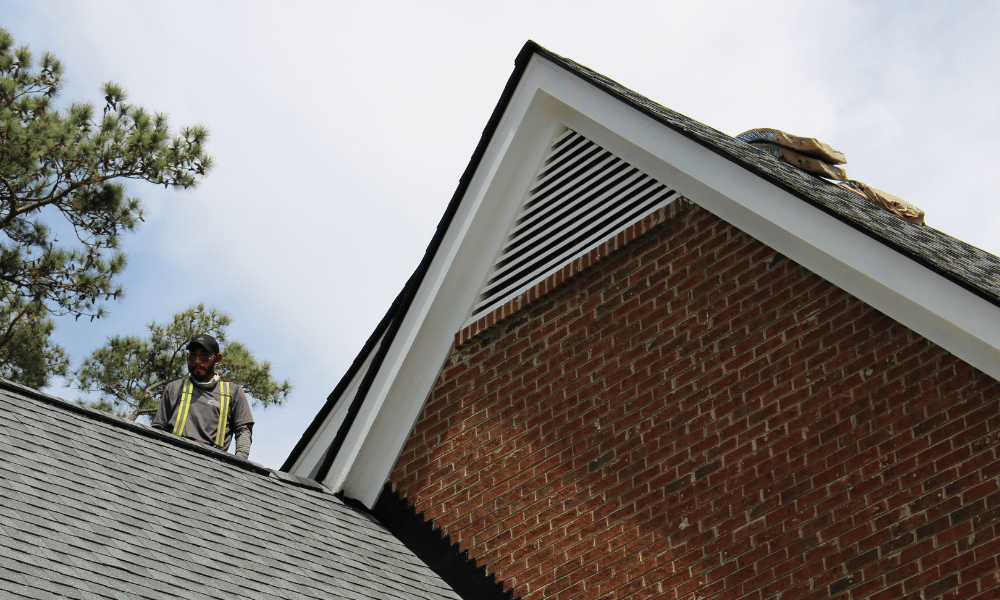
The first step to preventing ice dams is to check your attic ventilation and insulation.
A ventilated roof is a happy roof. Attics need intake and outtake areas. The ideal combination would be to have soffit vents for air intake and ridge vents for the outtake. However, if your roof has a small ridge, you may need to consider an attic fan instead.
Your attic should be the same temperature as the roof. If your attic is warmer due to poor insulation, improper roof ventilation, or air leaks, then the warm air in the attic can melt the snow on the roof. Once cold temperatures hit, the water will freeze, build up, and form an ice dam.
Intake should equal outtake.
Additional ice dam prevention techniques
In addition to attic ventilation & insulation, the best way to protect against winter damage is with a properly installed roof.
Let’s go over some key features of a winter-proof roof and ice dam protection.
1. Waterproof underlayment
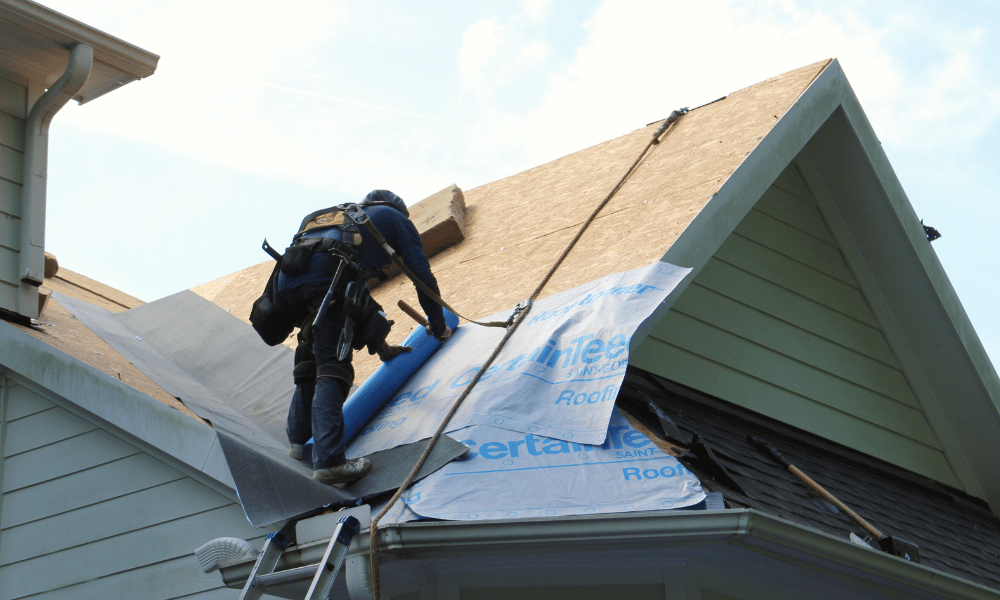
Every roof is completely covered with a water-resistant underlayment. In addition, most manufacturers require or recommend the installation of a waterproof underlayment (often called ice & water shield) on all valleys.
At a minimum, make sure your roofing contractor installs waterproof underlayment on valleys, low-sloped areas, and roof penetrations (vents, pipes, etc).
Since North Carolina is (normally) a warmer climate, this should suffice, especially if they also install drip edge.
However, if you want extra protection, you can ask your contractor to install additional waterproof underlayment on the rakes and eaves (the edges of your roofline). This will cost slightly more since waterproof underlayment is more expensive than the standard water-resistant underlayment.
Why not install waterproof underlayment everywhere?
You can, but it is not usually necessary and is often overkill. Furthermore, the water-resistant underlayment aids in roof ventilation. In contrast, having ice & water shield everywhere can actually keep your roof from “breathing” properly.
If you develop a roof leak along a roof valley, roofline, or roof penetration, ask your contractor to install an ice & water shield in the repair area.
This way, even if your roof did not originally have a waterproof underlayment, you can have it added after the fact in vulnerable, leaky areas.
2. Drip Edge
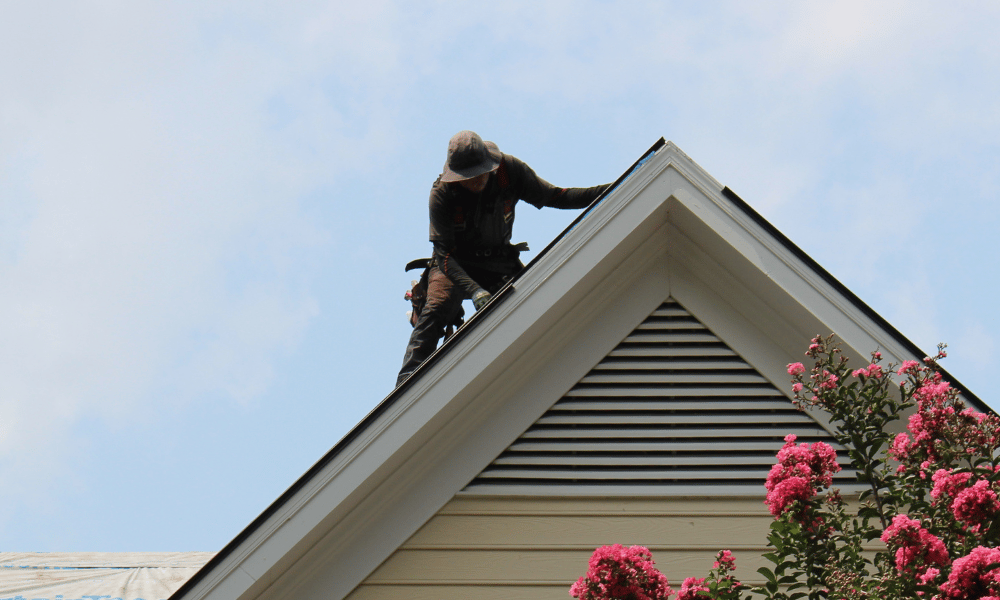
Most shingle brands recommend installing drip edge on all rakes and eaves.
Drip edge is a type of flashing that covers the roof edges to prevent water from entering the roofline along the edges.
It essentially looks like a long piece of metal, bend at a right angle, that covers the edges of the house where the fascia and roof deck meet.
Most ice dams form along the roof’s edge in the gutters. Since the drip edge covers and seals the roof’s edges, it can keep water from seeping under the roof when an ice dam forms.
3. Flashing

Flashing consists of the metal strips that seal any roof seams where water could enter. Contractors install flashing anywhere the roofline meets the siding along with penetrations like the chimney.
To protect against water damage, have your flashing inspected to make sure it is all installed properly and watertight.
Flashing usually needs resealing a few times throughout the lifespan of your roof.
When it comes time for a roof replacement, verify that your contractor will replace all roof flashing.
Why do new roofs get roof leaks?

Remember those customers we talked about at the beginning with roof leaks and brand new roofs?
All the things we just mentioned – ice and water shield, drip edge, flashing – many roofers skip over these things to save money.
They don’t install any ice and water shield or drip edge. And they do not replace the old flashing. Even if they do replace old flashing, it is very easy to install it poorly and requires a true roofing expert.
Most of the leaks we inspected were the result of ice dams and snow build-up in roof valleys that didn’t have ice & water shield. In other instances, the leaks were the result of nail pops or exposed nailheads that result from poor roof installations.
A roof is only as good as the workmanship of the crew and the thoroughness of the installation. When it comes time to replace or repair your roof, remember to ask who they’ll be sending on your roof. And when you receive that estimate, have them walk you through it line-by-line. You own your home, and you deserve to know what they’re doing on the roof.
There you have it! The 411 on ice dams. We hope this article has shown you how to protect against ice dams and keep your roof winter ready.
Questions? Need an inspection? Schedule a free inspection with Artisan Quality Roofing.
Artisan Quality Roofing is a local, family-owned roofing company in Apex, NC. With our own in-house crew and technicians, we are dedicated to providing homeowners all over the NC Triangle with the quality service they deserve.
